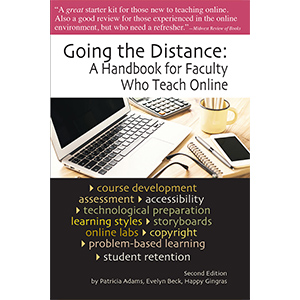How Student Motivation Influences Learning (Part One)

 By Bruce A. Johnson, Ph.D., MBA
By Bruce A. Johnson, Ph.D., MBA
In the previous blog series the issue of student engagement was examined. When instructors are evaluating students and their involvement in the class, they can assess the time and energy devoted through participation in class discussions and the level of thought put into the assignments submitted. In contrast, student motivation is an internalized process that manifests itself through engagement in the class and overall performance. Motivation includes internal and external needs, along with feelings, perceptions, and an attitude about the process of learning.
Self-motivation may be strengthened or diminished as a result of students’ interactions with their instructor or other students. When students are highly motivated and active participants in the class the process of learning is enhanced because they are working from a positive frame of mind. Negative interactions that result from conflict, lack of meaningful feedback, or other classroom factors will greatly decrease self-motivation and lessen the impact of learning and knowledge creation. When instructors understand how student motivation influences learning they can implement motivational strategies and interact with students in a meaningful way. In this first blog about student motivation core concepts will be discussed. The second blog will continue the analysis and provide motivational techniques and tools that instructors can implement.
What is student motivation?
The students’ desire to participate in the learning process is a starting point for understanding the concept of student motivation. It also involves the underlying reasons for their involvement or non-involvement in the classroom activities. Linda Lumsden notes that “although students may be equally motivated to perform a task, the sources of their motivation may differ.” Student motivation is primarily a psychological state of mind and the source of that motivation can be externally or internally based.
External motivation is often the result of grades that students hope or expect to receive, and the anticipated rewards expected for completing an assignment or their degree program. Motivation may also be the result of societal pressures that involve the student’s career choice or career plans, family obligations, or other lifestyle expectations. According to Jeffrey L. McClellan external motivational factors “include relationships, finances, access to necessary resources, rewards or punishments, actual or perceived social consequences, and other external factors.” It is important to note that these external factors and expectations may or may not be realistic, which can create conflict when students experience the reality of being in school and completing their educational goals.
Internal motivation often results from needs being met and these needs may include self-esteem, knowledge acquisition, and goal completion. The need for specific knowledge is related to a student’s decision to pursue an educational program, whether to advance his or her career or meet other societal expectations. Jeffrey L. McClellan also adds the following internalized factors: “needs, wants, interests, self-efficacy, aptitudes, perceptual models, knowledge, beliefs, values, and, to some extent, genetics or instinct.” The student’s internal motivation may also be influenced by the perceptions and expectations held about the learning process, along with his or her sense of identity, which can be formulated or shaped through classroom interactions.
When students enter the class they are initially guided by their internal and external sources of motivation. Understanding these factors allows instructors to make learning relevant, which will help meet students’ needs; however, there is much more for instructors to consider. Student motivation also includes self-motivation, which is required to maintain progress in the process of learning. While self-motivation is influenced by internal and external needs, it is also a product of interactions that occur throughout the class. The next blog in this series will consider how instructors can recognize students with a strong sense of self-motivation and provide motivational strategies that have an ability to connect with students in a positive manner.
About the Mentor: Dr. Bruce Johnson has had a life-long love of learning and throughout his entire career he has been involved in many forms of adult education; including teaching, training, human resource development, coaching, and mentoring. Dr. J has completed a master’s in Business Administration and a PhD in the field of adult education, with an emphasis in adult learning within an online classroom environment. Presently Dr. J works as an online adjunct instructor, faculty developmental workshop facilitator, and faculty mentor.









